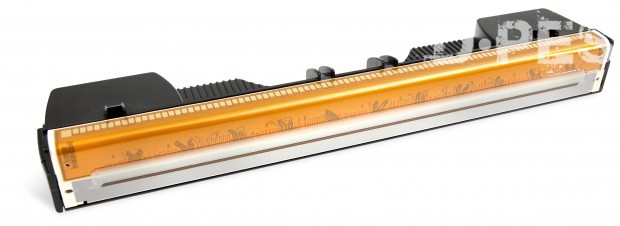After a series of partner announcements and product launches at drupa, Memjet announced a new strategy in the office printing market this week. A print-as-a-service model based on the Lomond EvoJet 2 will offer productivity and cost advantages to the office market, according to Memjet, matching 'the increasing pace of work life', according to Len Lauer, chairman and CEO.
The ability to print one A4 colour page per second may not seem too relevant to production or wide-format printers, but both the model and the technology should provoke a certain degree of interest. Memjet really wants to make this a fight about speed and convenience in print markets it sees as lagging. "At some stage a new technology comes along and changes everything," challenges Bill McGlynn, president of Memjet Office. "And that change has to come from a player on the outside."

Print-as-a-service seems like an expensive structure for any company to absorb when manufacturers make their most significant money on consumables, but Memjet's idea is of a fixed monthly fee of between £49 and £149. This can be accommodated by the fact that its one, 22.2cm print-head costs only half what a corresponding array would to manufacture, according to McGlynn, plus the machines' self-ordering system. "It doesn't break the business model if you had it in mind when you started out," he adds.
Could this pricing structure be applied to the larger commercial markets? Probably not. The consumption would be too variable and the substrates too costly to implement within the next several years. But for in-house printers there's a definite possibility, and one that I'd be looking at with interest if I were on the ordering end. Yes, you will always have the issue of using more some months and less others, but if the contract includes service and parts replacement the mathematics deserve some serious consideration.
Also present at the launch event – apart from world cycling sprint champion Victoria Pendleton – was the Own-X Widestar 2000, a 42" (1.06m) machine designed for the poster, plot printing and CAD markets, offering single-pass graphics at up to 30cm/s. This is the obvious first wide-format market, and it will soon become a battle between the comparatively little-known (for now) Own-X, Océ's Project Velocity and Fuji Xerox, whose unnamed machine débuted on the Caldera stand this year at drupa.
When, then, are we likely to see the technology scale for volume and wider markets? Refreshingly, there was no inexplicable boasting about other markets; a model for the commercial print sector will need more work as the print-heads will have to be able to cope with the type of heat caused by such throughput volumes. There were, however, interesting hints at the type of research and development being undertaken by the manufacturer, including industrial and medical markets that perhaps signal a crossover into the territory of 3D printing.
For wide-format print, it's about the ink technologies involved. As yet, the Memjet Waterfall print-heads are designed for dye-based formulations only. But the hint about research and development into completely different fluids suggests that it wants the heads to be able to move beyond conventional processes, and that UV-curable, solvent and other formulations are relatively incidental to the product's evolutionary trajectory. After all, Memjet wants to think differently (and fast), and its presentation seems to have recognised that the business models within print are changing significantly.
Print as a business is certainly in the mood for disruption, and Memjet wants to do what the iPhone did to mobile phones. What the iPhone was able to accomplish, of course, was to make itself immediately useful for an array of applications, both personal and business. Memjet might not be there right now, but given its announced strategy – and its willingness to think at print from left-field – it could well do so.
Most significantly, it recognises that print is (as posited by the inimitable Bo Sacks on Twitter yesterday) moving from being a commodity to a luxury. In a few years' time we won't need volume; we'll need fast turnaround and variable data, low wastage and excellent service. If you mention to the Memjet team the theory that a unit like the Own-X might be at the core of a drive-through style print shop, they beam and go silent. One has the impression that, whether or not the new models can really scale beyond the office in their current formats, there is a different vision of print that will soon upset a number of markets.